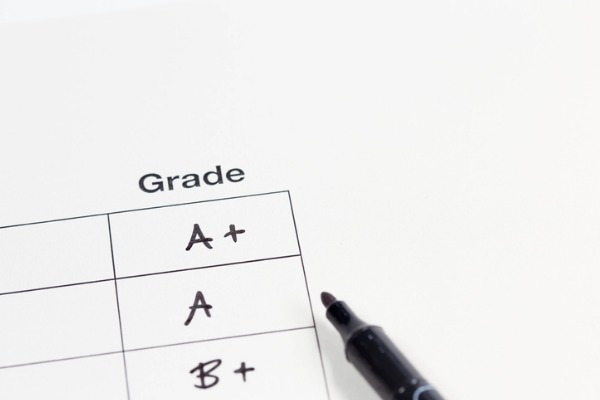Some colleges consider weighted and unweighted GPAs, while others may recalculate GPAs based on their weighting system. Colleges recognize the importance of weighted GPAs in reflecting students’ willingness to take on academic challenges and rigorous coursework.
They also understand that unweighted GPAs provide a fair and straightforward representation of overall performance. Furthermore, colleges frequently take a comprehensive approach to admissions, taking into account factors such as standardized test scores, and recommendation letters.
Join us as we investigate how colleges evaluate GPAs and strategies you can use to improve your academic profile.
Weighted Vs. Unweighted GPA
In college admissions, the debate over weighted and unweighted GPAs has piqued the interest of high school students and their families. Let’s look at the differences between the two.
Unweighted GPA
Unweighted GPA is a calculation method in which all courses, regardless of difficulty level, are given equal weight when determining a student’s GPA. It gives a straightforward representation of a student’s overall academic performance, giving equal weight to each class.
An unweighted GPA of more than 4.0 is not permitted, regardless of whether you are taking advanced or lower-level courses. This means your unweighted GPA will be the same if you get an “A” in both your AP and Cooking courses. Take a look at this example.
| Grade | Grade Point Value |
| A+ | 4.0 |
| A | 4.0 |
| A- | 3.7 |
| B+ | 3.3 |
| B | 3.0 |
| B- | 2.7 |
| C+ | 2.3 |
| C | 2.0 |
| C- | 1.7 |
| D+ | 1.3 |
| D | 1.0 |
| D- | 0.7 |
| F | 0.0 |
What is A Good Unweighted GPA?
A good unweighted GPA is typically between 3.5 and 4.0. This range is considered excellent and reflects strong academic performance. Keep in mind that GPA standards can differ between educational systems and institutions.
Weighted GPA
Weighted GPA accounts for the varying difficulty levels among courses. It gives more weight to advanced courses, such as honors, AP, or IB classes, to recognize the extra effort and academic challenges these classes entail.
A weighted GPA provides a more nuanced representation of a student’s academic accomplishments by recognizing the additional rigor involved in advanced coursework. Here is a table giving an example of a commonly used weighted GPA scale:
| Grade | Honors/AP/IB Courses | Regular Courses |
| A+ | 4.5 – 5.3 | 4.0 |
| A- | 5.0 | 4.0 |
| B+ | 4.7 | 3.7 |
| B | 4.0 | 3.3 |
| B- | 3.7 | 3.0 |
| C+ | 3.3 | 2.7 |
| C | 3.0 | 2.3 |
| C- | 2.7 | 2.0 |
| D+ | 2.3 | 1.7 |
| D | 2.0 | 1.3 |
| D- | 1.7 | 1.0 |
| F | 0.0 | 0.0 |
What is A Good Weighted GPA?
Determining what constitutes a “good” weighted GPA can vary depending on the context and the college or university one applies. However, a good weighted GPA is considered to be more than 4.0.
Because weighted GPAs account for the additional difficulty of advanced courses. A GPA above 4.0 indicates that a student performed well in difficult coursework.
It’s important to remember that highly selective institutions frequently have more stringent GPA requirements. These also include the admitted students’ boasting weighted GPAs well above 4.0. Colleges with less competitive admissions processes, on the other hand, may have lower weighted GPA expectations.
Factors That Influence Weighting Decisions in GPA Calculation
The weighting of courses in GPA calculations is not a standardized practice across all high schools. Several factors come into play when determining the weighting decisions for GPA calculation. Let’s explore some:
1. Course Difficulty
Honors, AP, and IB classes typically have more difficult material, higher expectations, and a heavier workload than regular-level courses. These courses necessitate more effort, critical thinking skills, and a deeper understanding of the subject matter.
2. College Preparatory Programs
Many high schools have specialized college preparatory programs or tracks to provide students with a rigorous academic experience. These programs frequently include a selection of advanced courses that align with the curriculum and expectations of colleges and universities.
Schools may assign higher weights to courses taken within these programs. This is to recognize students’ commitment to these programs and readiness for higher education.
3. Availability and Course Offerings
The various courses available at a high school can influence weighting decisions. Some schools may have a larger selection of advanced or specialized courses, whereas others may have fewer options.
When schools have a limited number of advanced courses available, they may assign higher weights. This ensures that students who take these available advanced courses receive appropriate recognition for their efforts.
4. College Admissions Landscape
The local college admissions landscape can also impact weighing decisions. Schools may align their weighting practices with the expectations and preferences of colleges and universities in their region.
This alignment ensures students are well-positioned and competitive when applying to higher education institutions.
Do Colleges Look At Weighted Or Unweighted GPAs?
Colleges take various approaches to evaluating GPAs. During the admissions process, some colleges take both weighted and unweighted GPAs into account. They recognize the importance of weighted GPAs in reflecting students’ commitment to challenging coursework and academic growth. A good example is Harvard College.
On the other hand, other colleges may recalculate GPAs based on their weighting system to standardize comparisons across applicants. An example of such a college is the University of California. This recalculated GPA may or may not correspond to the student’s original weighted or unweighted GPA.
Colleges also consider the high school’s profile and course rigor when evaluating GPAs; for example, Ithaca College. They understand that academic opportunities and course offerings differ between high schools. Colleges consider the context of the high school environment when accounting for these disparities.
It’s important to note that while GPA is a significant factor in the college admissions process, it is not the sole determinant.
Colleges take a holistic approach, considering various factors alongside GPA. These may include standardized test scores (such as the SAT or ACT), extracurricular activities, personal essays, letters of recommendation, and demonstrated leadership skills.
Strategies For Maximizing GPA Impact
If you’re aiming to maximize your GPA, there are several strategies you can employ to enhance your academic success. Here are some key strategies to consider:
- Take challenging courses: These advanced courses often carry additional weight when calculating your GPA, which can boost your overall GPA if you perform well.
- Develop effective study habits: Make a schedule for regular review and preparation for tests and assignments. Find a study environment that accommodates your learning style and minimizes distractions. Also, use active learning techniques such as summarizing information, making flashcards, and teaching concepts to others.
- Stay organized and manage your time: Use a planner or digital tools to keep track of assignments, tests, and deadlines. Prioritize your commitments and allocate sufficient time for studying, completing assignments, and participating in extracurricular activities.
- Seek academic support: Utilize your school’s tutoring services, study groups, or peer mentoring programs. If you’re struggling with a particular subject, don’t hesitate to contact your teachers for additional help.
- Set realistic goals and track your progress: Regularly assess your progress and adjust your study strategies or habits as necessary. Tracking your progress allows you to identify areas of strength and areas that need improvement.
Conclusion
The question of whether colleges consider weighted or unweighted GPAs is complicated. While both types of GPAs are considered in the admissions process, the weight assigned to each may differ between colleges.
Weighted GPAs recognize the effort and academic challenges associated with advanced coursework, whereas unweighted GPAs represent overall performance fairly.
Students should strive for academic excellence, take on challenging coursework, and present a well-rounded profile highlighting their accomplishments and potential contributions.
Finally, colleges use a holistic approach to evaluate an applicant’s suitability for their institution, taking into account a variety of factors in addition to GPA.



